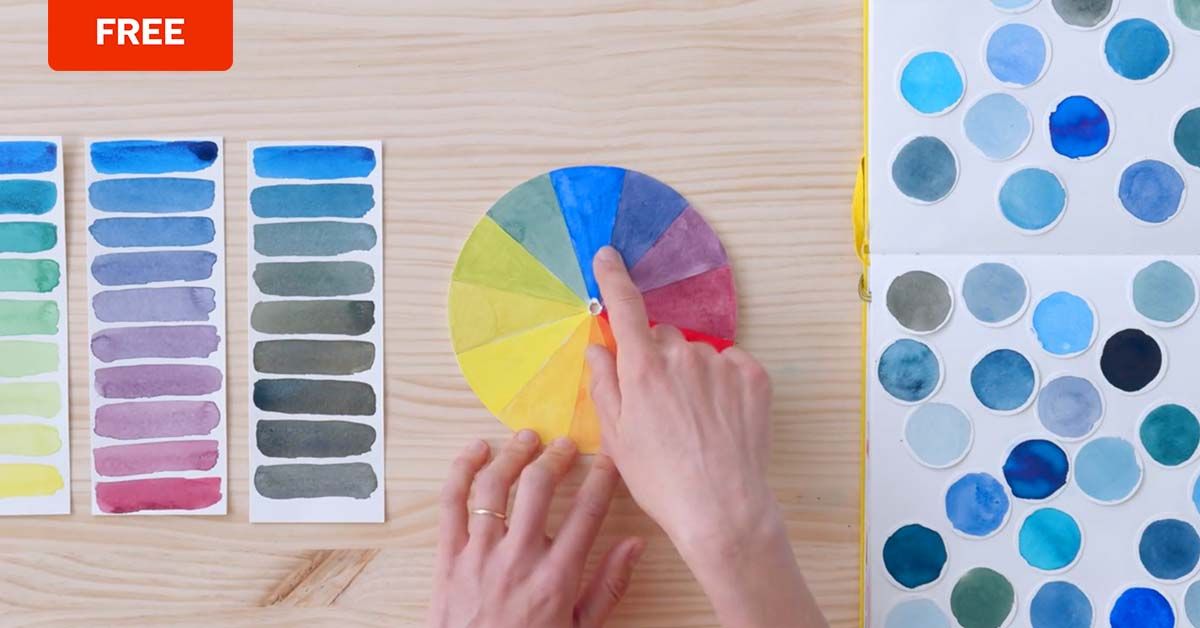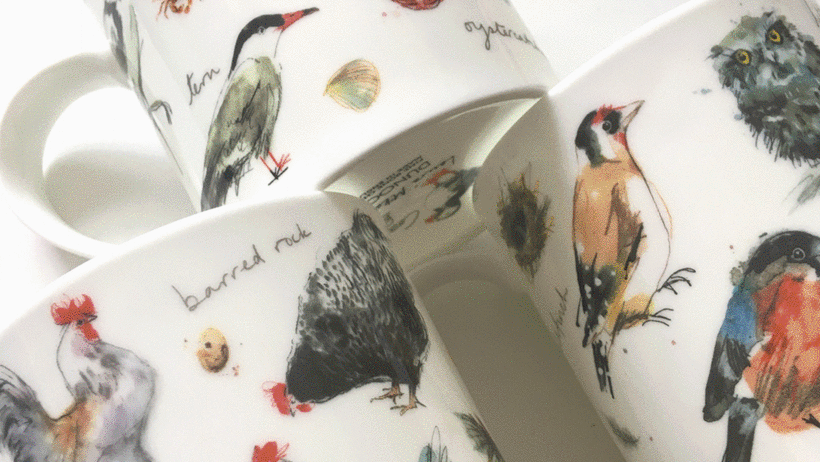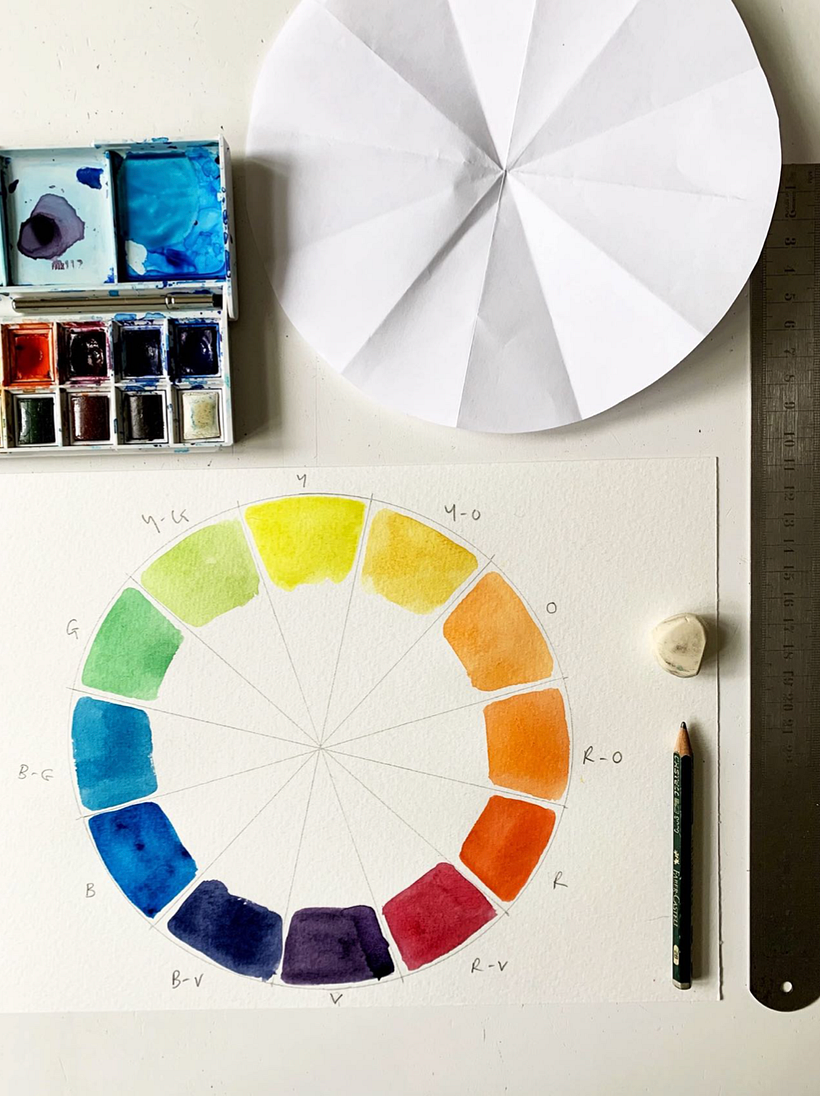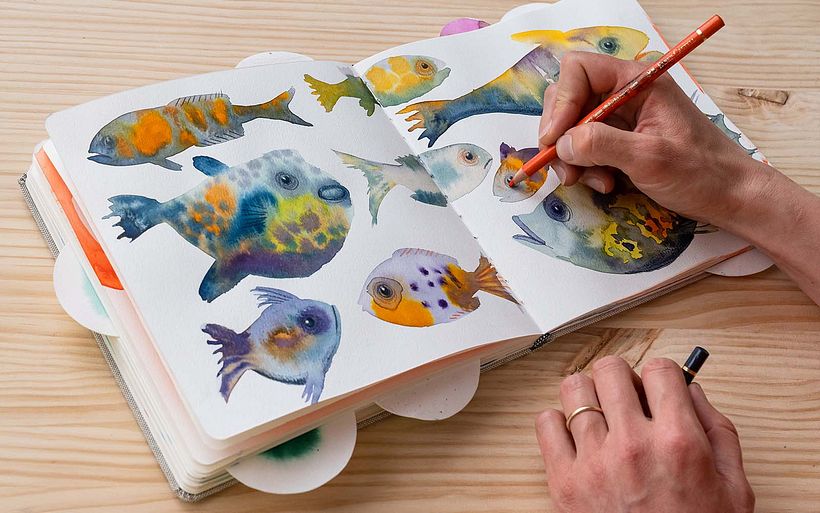Free PDF Guide to Paint a Color Wheel with Watercolor

The color circle is a strong foundation for understanding how hues interact: DIY your own with these step-by-step instructions
From the first time we pick up a crayon, we start making decisions about color. Which colors “go” together, and which don’t? Color can indicate mood, branding, and more. And learning to identify hue, value, intensity, and color combinations starts with the color wheel.
Laura McKendry is an illustrator and artist known for using unusual materials in her watercolor and ink-based pieces. Her work can be found on books, homeware, fabric, and fine art prints, for clients like Waterstones, John Lewis, and Profile Books.
Here, she shares a downloadable guide with step-by-step instructions to paint a color wheel in watercolor, from which you can explore the hues of the world around you.

What is a color wheel?
The color wheel is a basic tool of color theory, or the study of how colors interact as perceived by the human eye. In Laura’s example, the colors are painted onto a circle folded into twelve sections. The primary, secondary and tertiary colors sit next to those they are most harmonious with, to create a spectrum. Bright Red becomes Violet-Red, then Violet, then Blue-Violet, then Bright Blue, and so on.
Here’s a quick reminder of basic colors sorted by how they mix together.
1. Primary colors: Yellow, Red, Blue. They’re called “primary” because they are “base colors” which can be mixed to produce other colors. (Note that this isn’t the only color system that exists: in printing, Cyan, Magenta, and Yellow are the primaries, as they mix to produce other colors in that system. On computer screens, it’s Red, Green, and Blue.)
2. Secondary colors: Orange, Violet (Purple), Green. They are a result of mixing Yellow with Red, Red with Blue, and Blue with Yellow. Two primaries mixed equally produce a secondary color.
3. Tertiary colors: Yellow-Orange, Red-Orange, Red-Violet, Blue-Violet, Blue-Green, Yellow-Green. These are further mixtures of the secondary colors.
Certain colors make us feel a certain way, which might be useful if you’re painting a canvas that evokes a feeling of sadness, or if you’re advertising something and want to build audience excitement.

The benefits of understanding color
Growing your knowledge of harmonious and complementary colors can unlock a new layer of emotion and depth to your work. It can also:
1. Streamline your work process, because you know the compatibility of combinations at a glance.
2. Help you to communicate clearly with your target audience, as well as other artists and designers.
3. Teach you the origins of the tones you use.
4. Help you choose your colors with greater awareness and understanding, so you can feel confident expressing a specific intent.
5. Help you experiment with a wider range of hues that attenuate, highlight, or contrast each other.

Why should I paint my color wheel?
Early in her career, Laura was unsure how the scientific-seeming color theory would fit with her intuitive creative process. However, with time she learned that internalizing the essentials on a deep level actually benefited her intuition. Now she can choose colors confidently, recognizing their relationships to each other without fixating on or worrying about them.
She notes that it's useful to paint the wheel personally rather than printing one out, particularly with wet media like watercolors. You’ll learn the quantities needed when combining colors, and therefore get to know your paints better.
For a bonus exercise, Laura advises “finding some colors in objects around you. Referring to your color wheel if you need to, see if you can identify the hue (color) source from the color wheel. This is great practice in learning to match colors in the real world with your starting color from your paints.”
Download the color wheel instructions for free
After clicking on the button below, you'll find a PDF file in the Downloads folder on your computer called Free Guide to Paint A Color Wheel by Laura McKendry. The instructions are printed in English, Spanish, and Portuguese.
Join for Free and download
Att 3.1 Build a Colour Wheel_EN-ES-PT.pdf
If you want to keep learning, you can sign up for Laura McKendry’s course, Creative Watercolor Sketching for Beginners. You'll enrich your sketchbook with unconventional color combinations, and create experimental illustrations which express your playfulness.
Learn more about color theory with these resources
1. Our range of color theory courses explore the science and art of color in more detail.
2. To get inspired and learn from watercolor experts, try these three essential watercolor books for beginners.
3. If you love a particular color family and want to explore how other artists use it, Google has got you covered with the Color Library: an archive of 2,000 artworks sorted by color.
4. Finally, our super-popular free color theory ebook is packed with advice hand-picked from top courses.





2 comments
a69_tula
Thank you. ขอบคุณมากครับ
ale.alejandrochavezg
not available at this moment. That really sucks :(